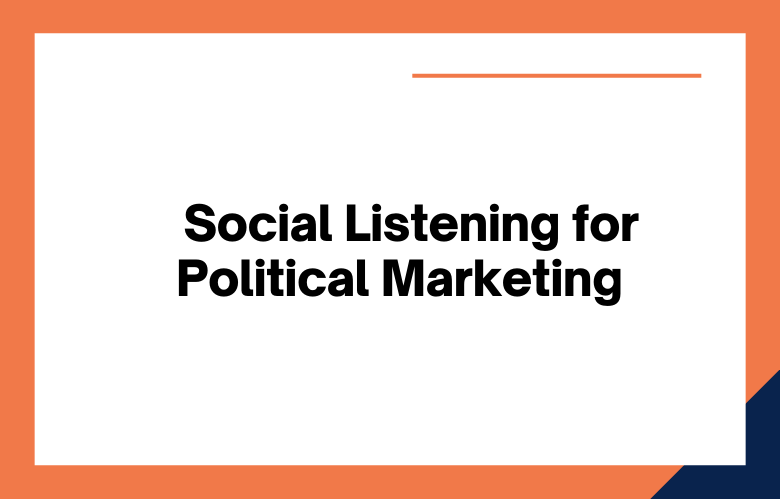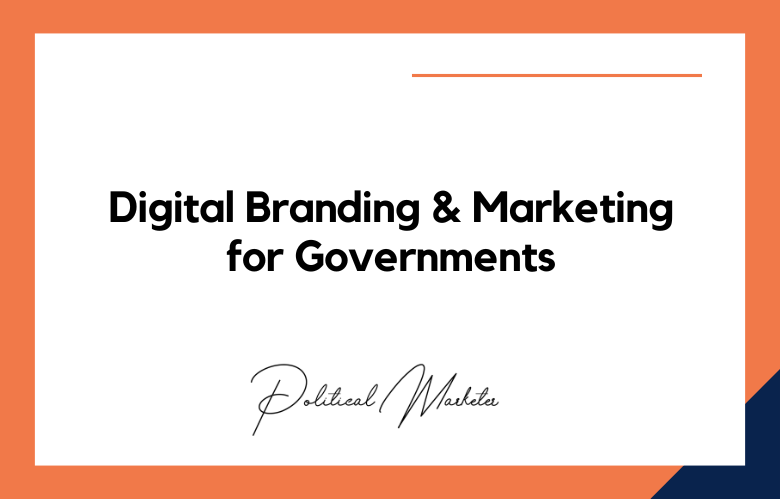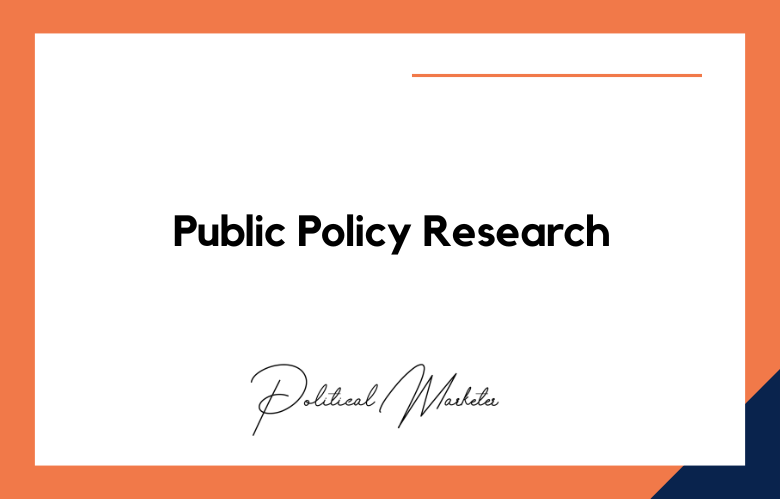You may have seen the recent headlines about how social media has become a significant talking point in this year’s presidential election. While it is helpful to be aware of what your opponents are saying, other ways to use social listening can help enhance your political marketing strategy.
We will discuss critical tactics for successful political marketing on social media using information from different sources like Facebook, Twitter, and YouTube.
To learn more about these tactics, please continue reading!
Social media is essential to any political campaign, but it’s even more crucial today. With so many channels to communicate with potential voters and monitor their thoughts about your candidate, it has never been simple to connect with the public on a personal level.
One way candidates can do this is through social listening. Social listening lets you track what people say about your candidate or party on social media sites like Facebook and Twitter. This information can help a campaign determine how best to target specific audiences for outreach efforts while also helping them avoid making mistakes that could have negative consequences.
What are some ways you use social listening in your marketing strategy? Share below!
What is Social Listening?
Social listening is a method that allows you to keep track of the online conversations that your brand or business generates.
Social listening is monitoring social media for conversations, mentions, and opinions about your business or product.
What is Political Social Listening?
It is the practice of monitoring, analyzing, and using social media content to understand public sentiment about politics.
“The political, social listening technology provides insights about the current state of public opinion. It enables organizations to listen to their target audiences’ explicit and implicit expressions.”
Ways to Use Social Listening in Enhancing Your Political Marketing Strategy
- Use social media to listen for keywords related to your political campaign
- Share interesting content on Facebook, Twitter, and other platforms that is relevant to your audience
- Look at trending topics around the country or world and see what people are talking about
- Monitor competitors’ social media posts for insights into their strategy
- Find out who their competition is and monitor what they are doing
- Find trending topics in social media to engage with your audience
- Use hashtags to connect with your audience on a more personal level
- Engage in conversations that have been happening for years but may not be popular at the moment
- Create a listening dashboard to track mentions of your campaign or issue
- Research who is talking about the campaign and why they are talking about it
- Use social media monitoring to find out what people are saying on Facebook, Twitter, etc., to determine which messages are resonating most with voters
- Track any negative comments that may be directed at you or your party
- Use social listening to help you know what your audience is talking about
- Monitor for any trending topics that could be beneficial to your campaign
- Track the sentiment of conversations- if people are saying positive things, then it’s a good sign
- Identify influencers and target them with information about your campaign
- Follow up on mentions of your company or product to show appreciation
- Find out who your voters are
- Identify potential supporters or opponents
- Monitor conversations about the election to see what people say and react to events.
- Track sentiment on social media posts, comments, and reviews of candidates or campaigns
- Use a tool like Hootsuite to monitor all mentions of your brand online
- Use social listening to find out what people are talking about in your industry
- Listen to what your competitors or other influencers are saying and use that information for marketing purposes
- Identify the most popular hashtags, topics, and keywords in a given time frame
- Monitor trends on Twitter with tools like Hashtagify, Topsy, and Social Mention
- Track your competition
- Monitor for mentions of your campaign or topic
- Engage with the public to share content, ask questions, and start conversations.
- Find influential people in your target audience’s demographic or geographic location.
- Find out what people are talking about on social media
- Create a list of keywords and hashtags relevant to your campaign or party
- Monitor the conversation on those topics as it develops over time, and identify trends in sentiment
- Use this information to adjust your messaging strategy
- Find out what your competitors are doing
- Monitor social media for trending topics and hashtags
- Track the idea of posts, comments, and shares on social media channels
- Use Facebook’s “Lookalike Audiences” to find new customers who might be interested in your product or service
- Create a list of keywords to search for
- Set up alerts on social media channels you want to monitor
- Track the sentiment of your followers and competitors’ followers
- Find out what people say about your company or campaign, then respond appropriately.
- Find trending topics on social media.
- Monitor what your competitors are doing and how they’re being received
- Use social listening to get a sense of public sentiment for you, your competitor, or the topic at hand
- Track key phrases from journalists and influencers to stay on top of emerging stories and themes that might be relevant to your campaign
- Monitor your competitors’ social media pages for a sense of what they’re saying
- Track hashtags related to your political party or issue to see how the public is reacting
- Find out who’s talking about you online and use those people as influencers or spokespeople
- Understand what people are saying about your candidate on social media
- Use social listening to find out who is talking about your candidate and what they’re saying
- Find new supporters by contacting people talking positively about you on social media.
- Track the sentiment of online conversations- are they positive, negative, or neutral?
- Monitor your competitors’ social media posts to see what they’re up to.
- Track the number of people discussing a particular topic on social media, and use that information to inform your marketing strategy.
- Look at trends in your data, such as which topics get the most attention or which posts resonate with customers.
- Use social listening tools like Hootsuite or Social Mention to monitor online conversations.
- Find out what people are saying about your campaign.
- Identify the best time to post on social media for the most engagement.
- Determine which posts are getting the most shares, likes, or retweets.
- Get more followers by following other accounts that share similar interests and demographics.
- Monitor mentions of your opponent’s name to see how they’re performing with voters.
- Listen to social media conversations and find out if there are any trends or hot topics.
- Use hashtags, keywords, and other search terms on various platforms to ensure you’re not missing anything.
- Monitor the sentiment of posts- positive or negative? What’s the emotional tone? Are people angry, satisfied, or confused?
- Engage with other users on that channel, including responding to comments and questions.
- Use hashtags to create conversations about your topic of interest.
- Create a list of keywords, phrases, and topics related to your campaign or political party.
- Use social listening to identify the most influential people in your industry.
- Find out who is talking about your competitors and their products/services.
- Track what’s said about you on social media, including positive and negative comments.
- Monitor how customers are responding to new marketing campaigns or product launches.
- Listen to the conversations your target audience is having on social media.
- Develop a social listening strategy that includes keywords, sentiment analysis, and geographic location.
- Create ads based on what you’ve learned from your research.
- Track what’s working best for you.
- Find people who are talking about your campaign, and engage with them.
- Track social media trends to see what is popular in your area.
- Listen for conversations that mention you or your opponents.
- Be aware of potential threats from political opponents or the opposition party.
- Use a hashtag as a way to start a conversation on social media.
Conclusion
Social listening is a great place to start if you want to boost your political marketing strategy. By monitoring what the public says about the issues and candidates on their favorite channels like Facebook or Twitter, you can glean insights into their thoughts and what might resonate with them.
It may initially sound intimidating because there’s so much noise, but we want to help simplify it for you! Contact us today to learn more about our Political Social Listening Consulting services.
Ways to Use Social Listening to Enhance Political Marketing Strategy: FAQs
What Is Social Listening?
Social listening is the process of monitoring digital conversations to understand what customers, voters, or the public are saying about a brand, topic, or campaign.
Why Is Social Listening Important?
It helps organizations track sentiment, identify trends, manage reputation, and engage with their audience effectively.
How Can Social Listening Benefit Political Campaigns?
It provides insights into voter opinions, identifies emerging issues, detects misinformation, and guides messaging strategies.
What Platforms Are Used for Social Listening?
Common platforms include Twitter, Facebook, Instagram, Reddit, blogs, forums, and news sites.
How Does Social Listening Differ From Social Monitoring?
Social monitoring tracks specific mentions, while social listening analyzes broader conversations for insights and trends.
What Tools Are Available for Social Listening?
Tools include Brandwatch, Hootsuite Insights, Talkwalker, Sprout Social, and Meltwater.
How Can Social Listening Help Crisis Management?
By detecting negative sentiment early, enabling timely responses, and mitigating potential damage.
What Role Does Social Listening Play in Content Strategy?
It identifies popular topics, audience preferences, and gaps to tailor engaging content.
How Can Social Listening Improve Customer or Voter Engagement?
By responding to feedback, addressing concerns, and participating in relevant conversations.
Can Social Listening Detect Emerging Trends?
Yes, it helps spot new topics, hashtags, and shifts in public opinion.
How Does Social Listening Support Competitive Analysis?
By monitoring competitors’ mentions, campaigns, and public perception.
What Are Key Metrics in Social Listening?
Metrics include sentiment analysis, share of voice, engagement rates, and trend volume.
How Can Social Listening Influence Product or Policy Development?
By gathering user feedback and identifying unmet needs or concerns.
What Challenges Exist in Social Listening?
Challenges include data overload, language nuances, fake accounts, and interpreting sentiment accurately.
How Can Social Listening Be Integrated Into Overall Marketing or Campaign Strategy?
By aligning insights with messaging, advertising, and outreach efforts.
What Ethical Considerations Are There in Social Listening?
Respecting privacy, avoiding surveillance misuse, and transparency in data collection.
How Can Organizations Act on Insights Gained From Social Listening?
By adjusting strategies, creating targeted campaigns, and improving communication.
What Is the Role of AI in Social Listening?
AI enhances sentiment analysis, topic detection, and automates data processing.
How Can Social Listening Help Build Brand or Candidate Reputation?
By identifying and amplifying positive sentiment and addressing negative feedback proactively.
What Future Trends Are Emerging in Social Listening?
Greater integration with CRM, real-time analytics, multilingual support, and predictive insights.
One way to get in touch is by filling out our online form on this site or give us a call at +91 9848321284. Let’s work together today!











